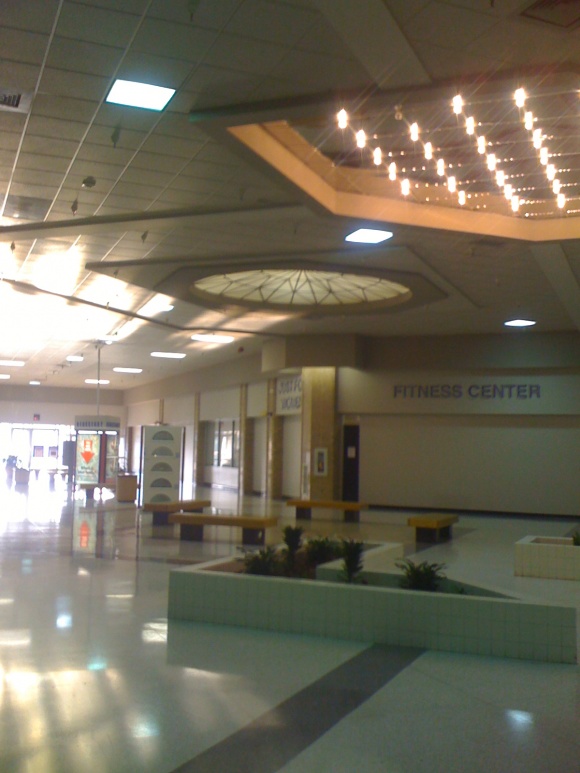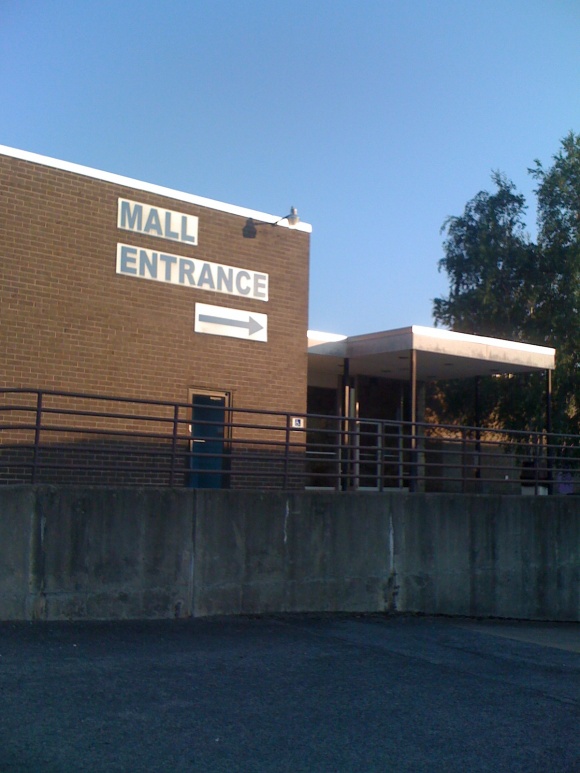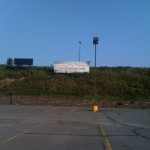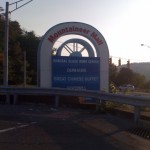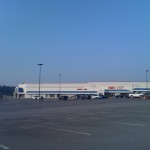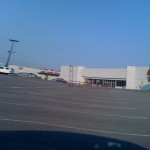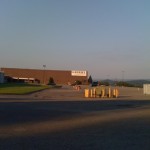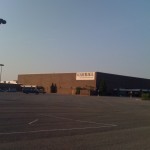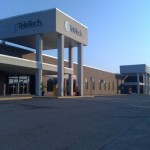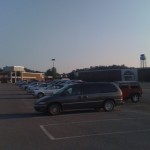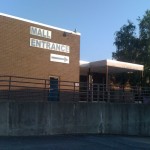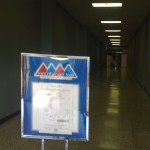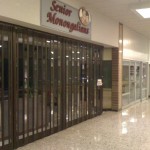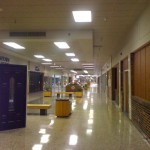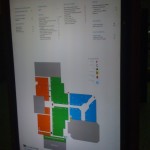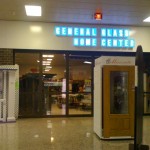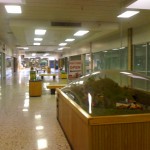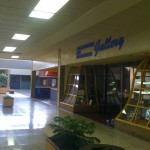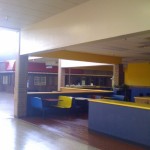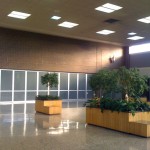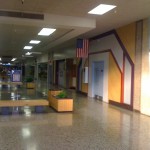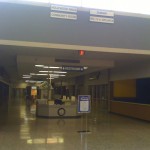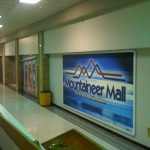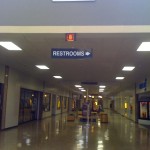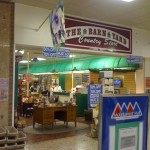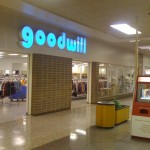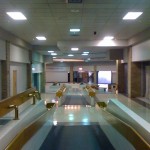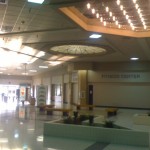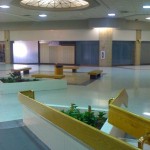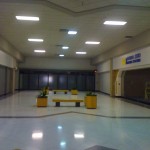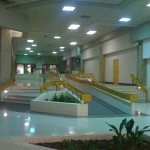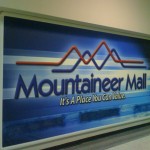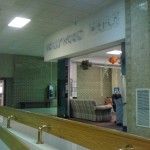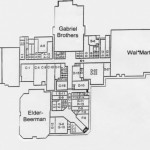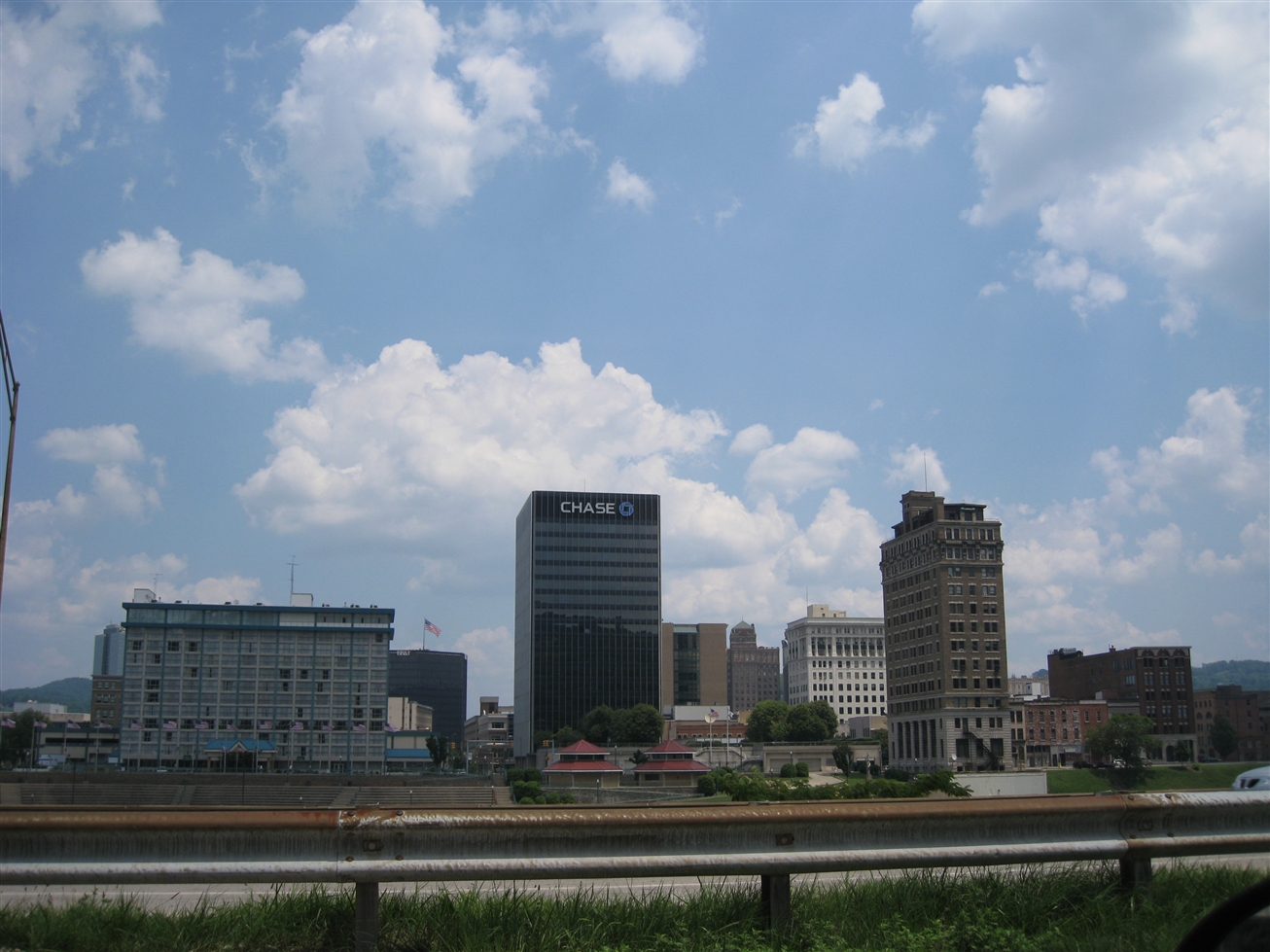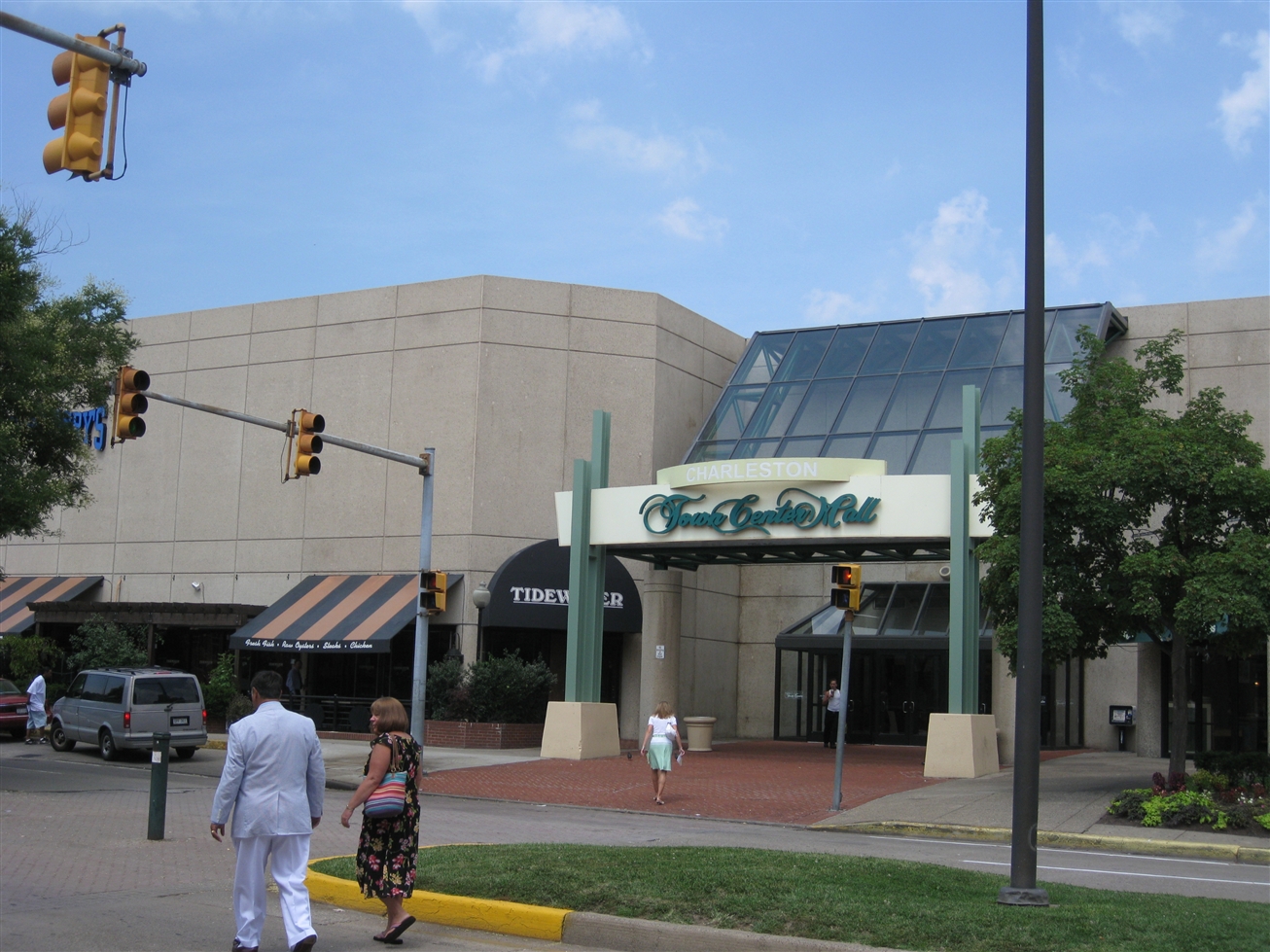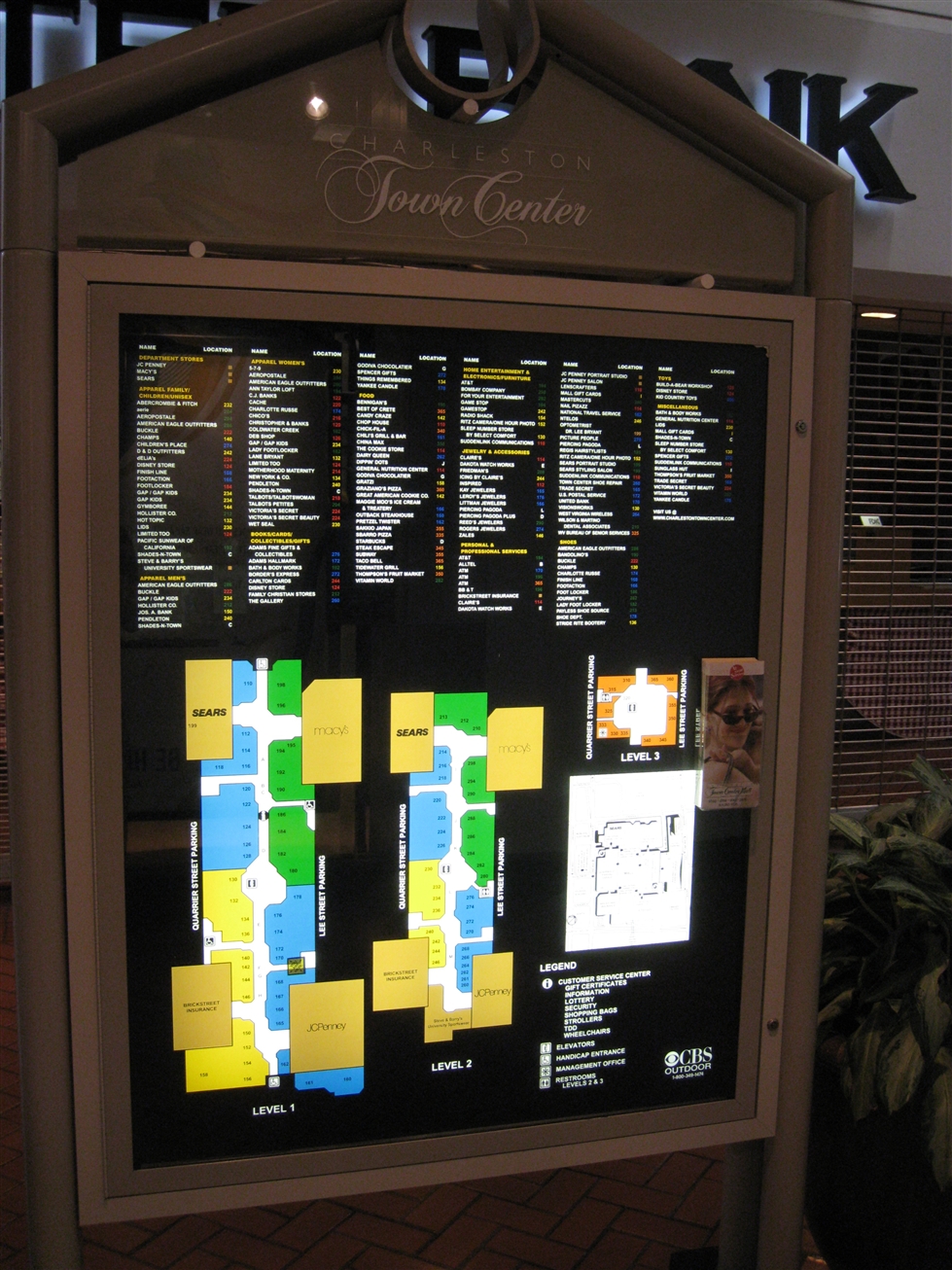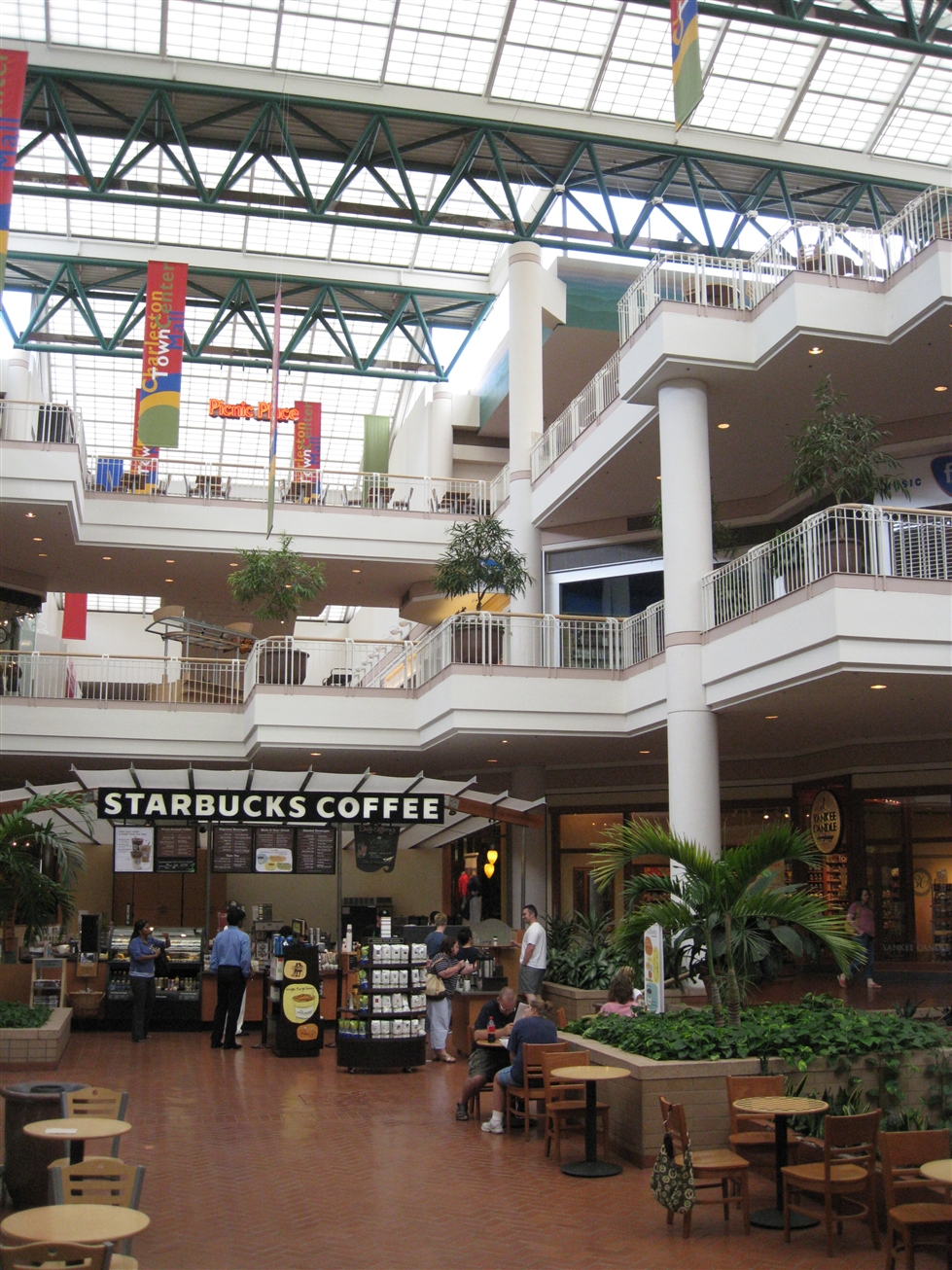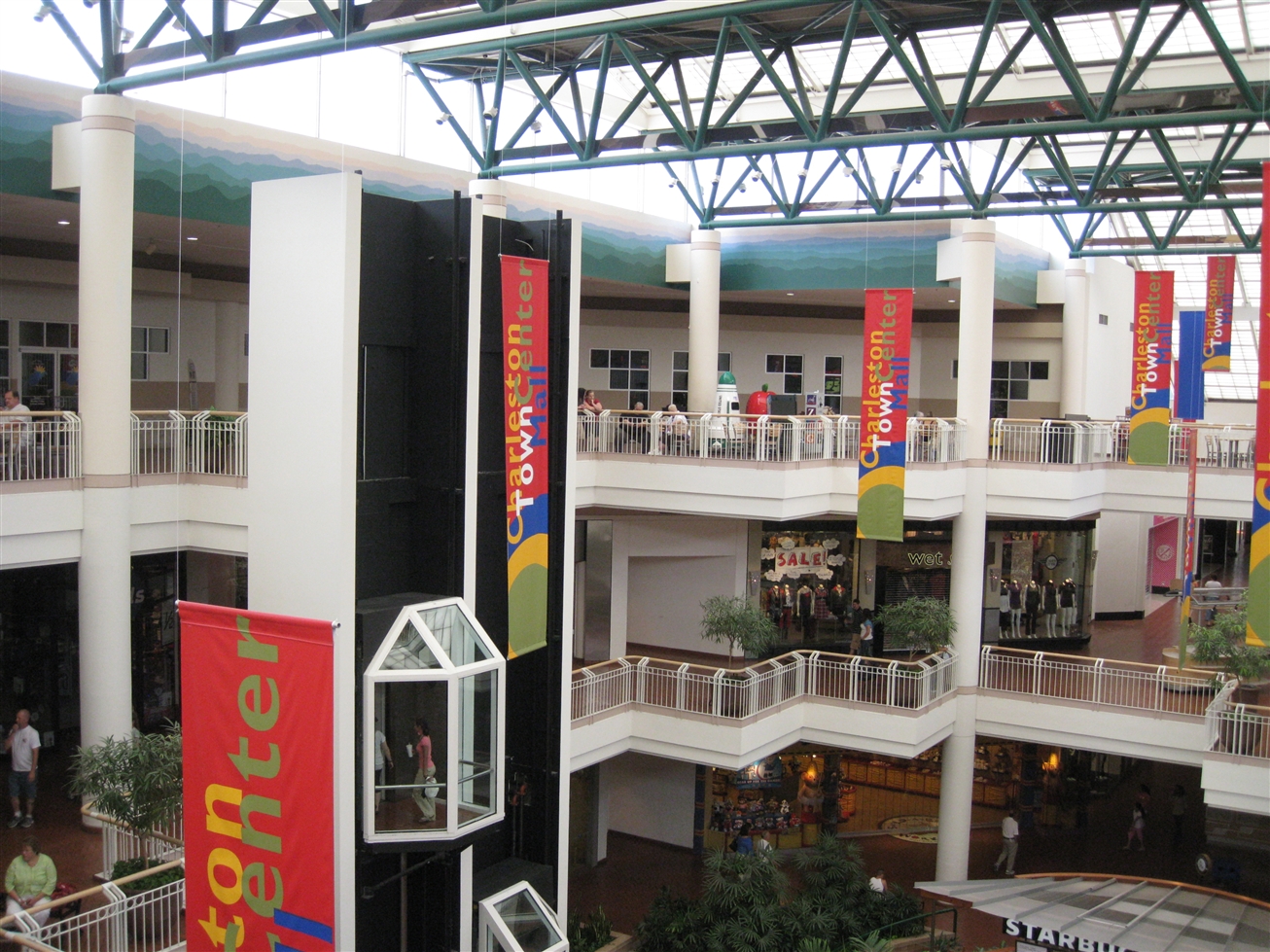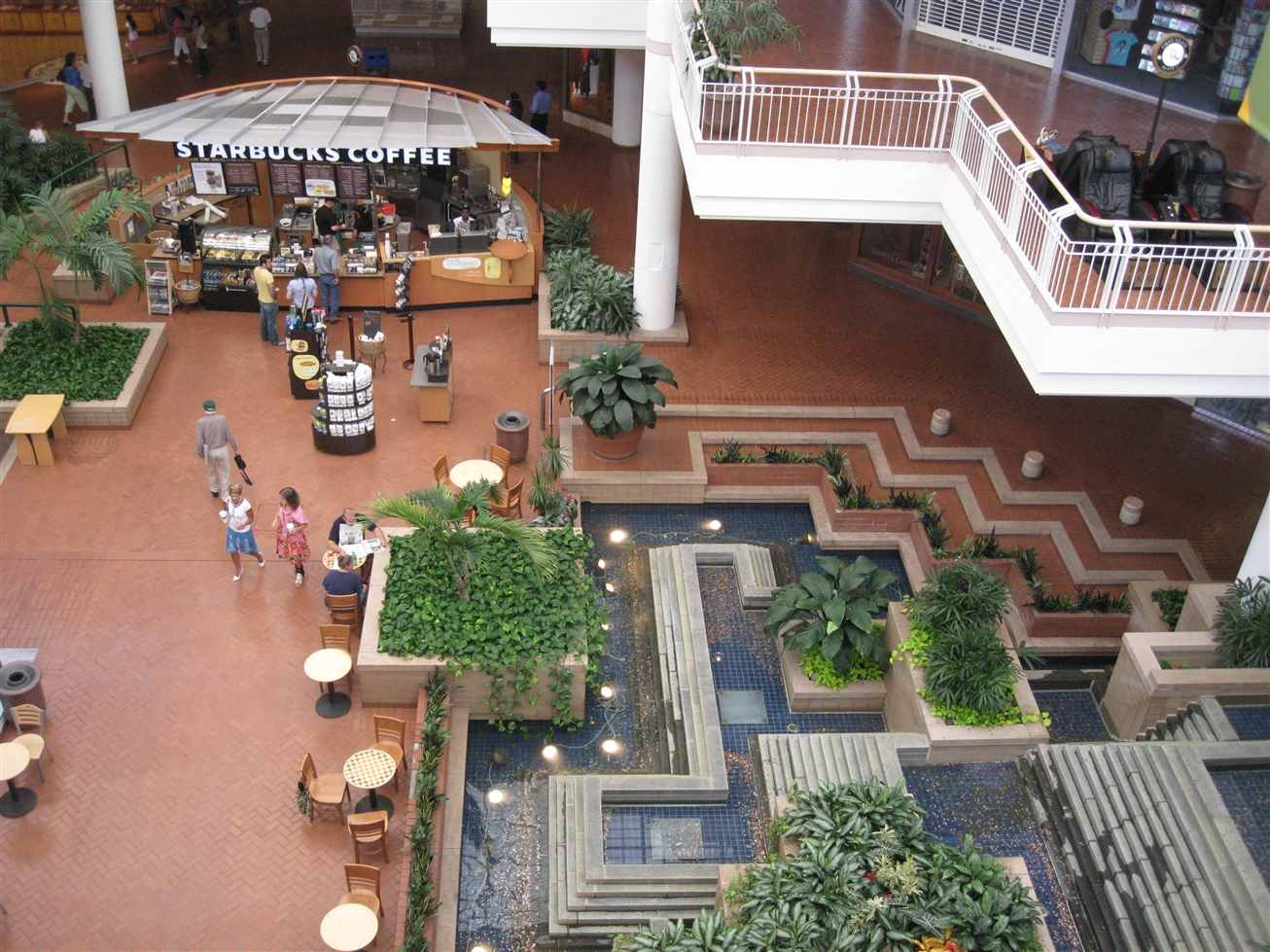Martinsburg, West Virginia is located in the fast-growing eastern panhandle of the state. With a population of 17,000, Martinsburg is the hub of the eastern panhandle and the county seat of Berkeley County. It’s also part of a larger corridor that stretches along I-81, linking the Shenandoah Valley to western Maryland, including the cities of Winchester, Virginia and Hagerstown, Maryland. Recently, the eastern panhandle of West Virginia has become subject to an influx of new residents from the more populated and nearby Baltimore-Washington metropolitan area.
Martinsburg was a relative late-comer to the mall scene, for a few reasons. First off, malls were built in nearby Hagerstown in 1974, and in Winchester in 1982. Both cities are a short 20-minute drive from Martinsburg. In addition, Martinsburg simply didn’t have the population to support a mall until fairly recently. As late as 1990, Berkeley County only had about half the residents it does today.
 In the late 1980s, Pennsylvania mall developer Crown American decided Martinsburg could support a mall, independent of the offerings in nearby Winchester and Hagerstown. At the time, the quiet economy of the eastern panhandle of West Virginia was projected to soar with new businesses (like United Airlines) moving in to capitalize on West Virginia’s business-friendly tax model in tandem with the close proximity to both Washington and Baltimore, which are both about 80 miles away. The anticipated business growth was expected to fuel a massive population boom in Martinsburg, and this eventually did happen; however, it was not because of the business growth that never really materialized, but due to planning policies supporting the massive growth of exurbs and suburban sprawl. The population in the eastern panhandle grew mostly from commuters who were priced out of the Washington/Baltimore markets, wanted more house for their money, a pastoral rural setting, lower crime and taxes, more space, better schools, or any or all of the above. To support this growth, MARC began daily regional train service from Martinsburg, ferrying commuters into Union Station in downtown Washington.
In the late 1980s, Pennsylvania mall developer Crown American decided Martinsburg could support a mall, independent of the offerings in nearby Winchester and Hagerstown. At the time, the quiet economy of the eastern panhandle of West Virginia was projected to soar with new businesses (like United Airlines) moving in to capitalize on West Virginia’s business-friendly tax model in tandem with the close proximity to both Washington and Baltimore, which are both about 80 miles away. The anticipated business growth was expected to fuel a massive population boom in Martinsburg, and this eventually did happen; however, it was not because of the business growth that never really materialized, but due to planning policies supporting the massive growth of exurbs and suburban sprawl. The population in the eastern panhandle grew mostly from commuters who were priced out of the Washington/Baltimore markets, wanted more house for their money, a pastoral rural setting, lower crime and taxes, more space, better schools, or any or all of the above. To support this growth, MARC began daily regional train service from Martinsburg, ferrying commuters into Union Station in downtown Washington.
Crown American’s Martinsburg Mall debuted in 1991, located west of downtown directly along I-81. When it opened, the mall was anchored by Wal-Mart, JCPenney, Sears, and Allentown-based Hess’s, with space for about 60 additional retailers, and, according to ICSC, 556,000 square feet in total. Interestingly, Crown American owned Hess’s at the time, so putting a store here was a natural fit. This one level mall also features a food court, and was Crown American’s signature period mall design, similar to the centers they built in Lancaster (which we’ve featured on this site) and Newark, Ohio. All of these malls are designed with two main hallways and a “loop” at one end containing the food court area.
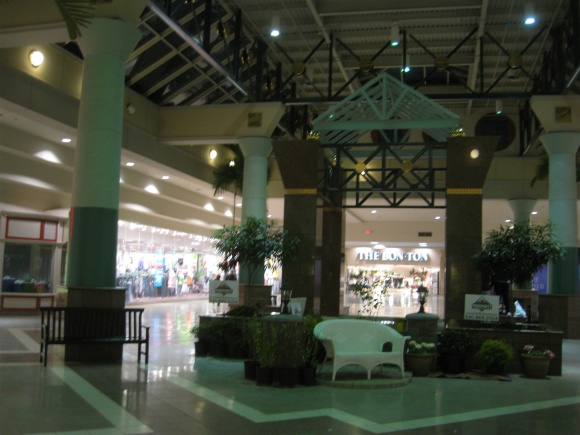 However, unlike some of Crown American’s other malls, Martinsburg Mall was never notably successful. Wal-Mart was always big draw, especially in the mall’s early days when Wal-Marts were new to the national scene. Initially scared about the presence of a new mall in Martinsburg, the malls in both Winchester and Hagerstown fared much better than expected with their brand new competition. Also, both Winchester and Hagerstown built extensive retail strip areas and large power centers surrounding each of their malls, which became regional draws in themselves. By comparison, Martinsburg had fewer ancillary retail centers; so, even though Martinsburg had the mall, area residents still went to either Winchester or Hagerstown to do other shopping.
However, unlike some of Crown American’s other malls, Martinsburg Mall was never notably successful. Wal-Mart was always big draw, especially in the mall’s early days when Wal-Marts were new to the national scene. Initially scared about the presence of a new mall in Martinsburg, the malls in both Winchester and Hagerstown fared much better than expected with their brand new competition. Also, both Winchester and Hagerstown built extensive retail strip areas and large power centers surrounding each of their malls, which became regional draws in themselves. By comparison, Martinsburg had fewer ancillary retail centers; so, even though Martinsburg had the mall, area residents still went to either Winchester or Hagerstown to do other shopping.
In 1994, Crown American sold off its Hess’s stores, and the Martinsburg Mall location became a Bon Ton.
Wal-Mart made a contentious decision affecting Martinsburg Mall in 1998, and it became an obvious wound to the center. Wal-Mart renovated its store into a Supercenter format that year, and subsequently shut their entrance to the mall entirely. Because Wal-Mart likely owns their parcel separate from the mall, this decision was apparently allowed with no say from Crown American. I’m sure W-M probably even studied that their loss would be mitigated by not operating two separate entrances, and that they’d continue to do business there just fine, but this has to be annoying and inconvenient for shoppers who value convenience and want to visit other businesses in the mall. If it’s snowing, raining, too cold, or too hot outside I’m sure people would have appreciated the connection. Wal-Mart continues to be the most popular destination at Martinsburg Mall, and requiring shoppers to go outside and go back in to visit any of the other stores, to me, seems kind of rude. I’m sure it was a major blow to the mall itself, dropping foot traffic considerably. Here’s Wal-Mart’s former mall entrance – they boarded it up and put up a mystery structure to tease us:
In 1999, Hagerstown’s Valley Mall embarked upon a major expansion project, adding a wing of stores and a new Hecht’s (later Macy’s), Old Navy, and a multiplex cinema. As I mentioned earlier, big box power centers and retail strip began to pop up in Hagerstown, and in Winchester, but not so much in Martinsburg. Visiting popular national stores like Target, Kohls, Petsmart, Borders, Circuit City, Office Max and Dicks required driving to Hagerstown and/or Winchester, and probably helped the malls in those cities due to synergy. This same lack of synergy disallowed Martinsburg Mall to reach its full potential, if it had any to begin with.
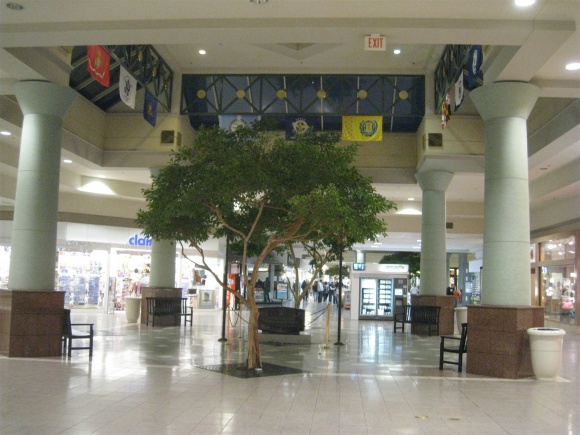 By the 2000s, the outlook for Martinsburg Mall continued to be bleak, though far from completely dead. In 2004, Crown American was sold to another Pennsylvania company, PREIT, who promptly unloaded Martinsburg Mall and a bunch of other “non-core assets”. The mall’s new owner, Lightstone Group, operated the mall under its subsidiary Prime Retail, and ended up defaulting on the mall by 2008, returning it to its lender in early 2009.
By the 2000s, the outlook for Martinsburg Mall continued to be bleak, though far from completely dead. In 2004, Crown American was sold to another Pennsylvania company, PREIT, who promptly unloaded Martinsburg Mall and a bunch of other “non-core assets”. The mall’s new owner, Lightstone Group, operated the mall under its subsidiary Prime Retail, and ended up defaulting on the mall by 2008, returning it to its lender in early 2009.
Meanwhile, the retail synergy that Martinsburg Mall hoped to possibly capture finally came in the form of a massive power center that opened in 2009, an exit south of the mall and on the other side of I-81. The Commons, owned by AIG Baker, is a multi-anchor power center featuring Target, Best Buy, Dick’s Sporting Goods, Books-a-Million, Five Below, Staples, Michaels, TJ Maxx, Bed Bath and Beyond, and Petsmart, with many smaller stores and restaurants to boot. The Commons is clearly a slap in the face to Martinsburg Mall, who would have probably gladly welcomed some of those tenants. On the other hand, the growing WV panhandle probably appreciates not having to drive 20 minutes to Winchester or Hagerstown to shop anymore.
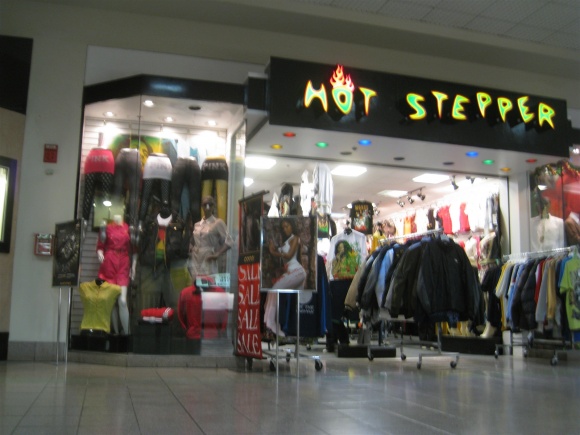 In early 2010, Mountain State University, based in Beckley, West Virginia, a considerable distance from Martinsburg, bought the mall from receivership with plans to expand into the mall and hold classes there. MSU had already operated a Martinsburg campus from a former outlet mall it purchased in 1999. As of early 2011, though, the campus has not yet moved from its current location into Martinsburg Mall.
In early 2010, Mountain State University, based in Beckley, West Virginia, a considerable distance from Martinsburg, bought the mall from receivership with plans to expand into the mall and hold classes there. MSU had already operated a Martinsburg campus from a former outlet mall it purchased in 1999. As of early 2011, though, the campus has not yet moved from its current location into Martinsburg Mall.
Today, Martinsburg Mall is far from dead, and seemingly not in rapid decline. Yet, the offerings here have always been meager, and it seems though for its size it isn’t – and hasn’t ever – reached its full potential. Maybe Martinsburg didn’t need a mall – even despite all its growth there are two formidable ones only twenty minutes away, and the entire Washington-Baltimore metropolitan area is just over an hour’s drive. There are still national stores here, but also quite a bit of vacancy. The college hopes that synergy can be achieved by opening up disused parts of the mall to classes, and that’s not a terrible idea. College students are certainly an appropriate demographic for malls, so hopefully it’s not too late.
I visited Martinsburg Mall in April 2011 and took the pictures featured here. I was very entertained by some of the folks at the mall, as well as by some of the local stores that operate here. In the food court, one popular stand offering ice cream was named “55-60s Ice Cream” – not sure what that means, but it looked good. Can anyone explain? Also, look at this man, whose advertisement is placed on a dead storefront. He’s really excited about home improvement:
Also roving the mall the evening I visited were two very amorous young gay men and their female friend, who had no qualms about public displays of affection. And giggling. And lastly, not to get anyone in trouble, but the sight of the girl working the customer service/information booth totally engrossed in FarmVille on a giant, outdated CRT monitor made me giggle. I actually always appreciate and absorb the people watching, culture, and local color in a mall, for better – or even sometimes – for worse. It’s amusing, and it’s something that isn’t usually transferred by the myriad of strip or outdoor malls that lack public gathering spaces. Food for thought. As always, feel free to leave your own comments and experiences concerning this mall.
Photos from April 2011:
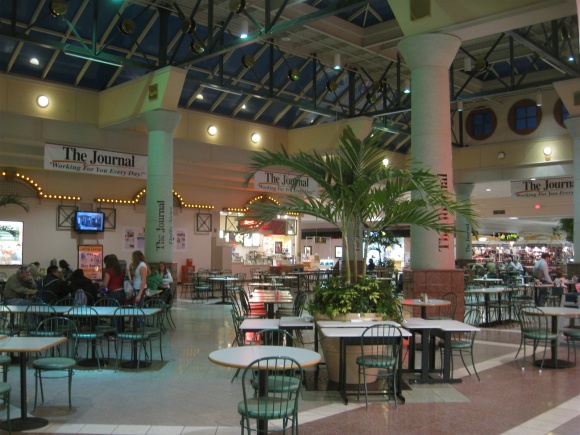 Crown American’s Martinsburg Mall debuted in 1991, located west of downtown directly along I-81. When it opened, the mall was anchored by Wal-Mart, JCPenney, Sears, and Allentown-based Hess’s, with space for about 60 additional retailers, and, according to ICSC, 556,000 square feet in total. Interestingly, Crown American owned Hess’s at the time, so putting a store here was a natural fit. This one level mall also features a food court, and was Crown American’s signature period mall design, similar to the centers they built in Lancaster (which we’ve featured on this site) and Newark, Ohio. All of these malls are designed with two main hallways and a “loop” at one end containing the food court area.
Crown American’s Martinsburg Mall debuted in 1991, located west of downtown directly along I-81. When it opened, the mall was anchored by Wal-Mart, JCPenney, Sears, and Allentown-based Hess’s, with space for about 60 additional retailers, and, according to ICSC, 556,000 square feet in total. Interestingly, Crown American owned Hess’s at the time, so putting a store here was a natural fit. This one level mall also features a food court, and was Crown American’s signature period mall design, similar to the centers they built in Lancaster (which we’ve featured on this site) and Newark, Ohio. All of these malls are designed with two main hallways and a “loop” at one end containing the food court area.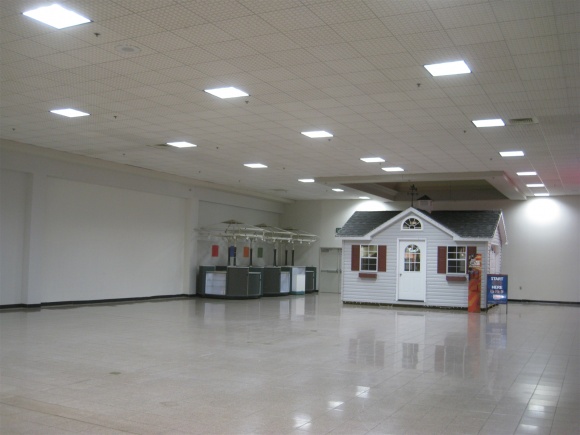
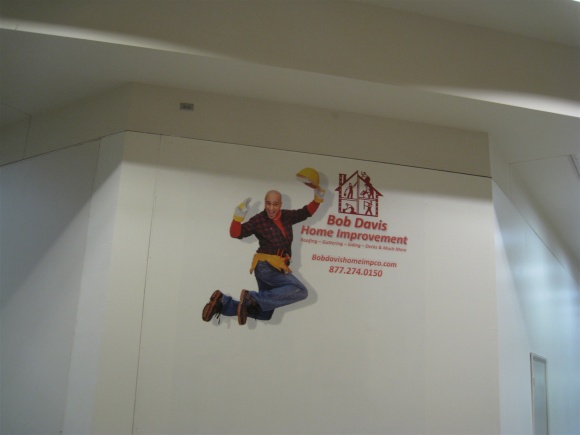
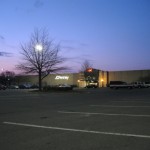
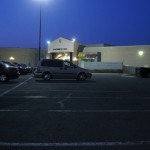
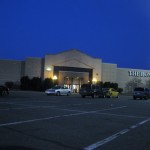
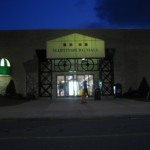
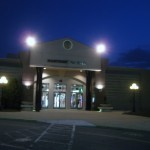
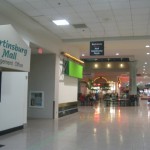
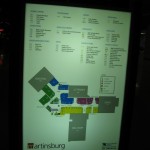
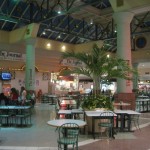
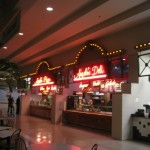
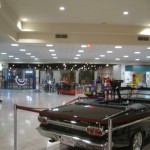
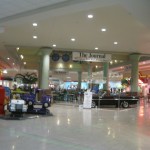
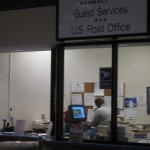
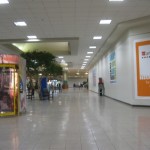
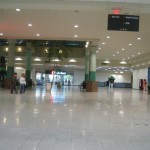
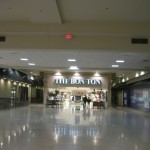
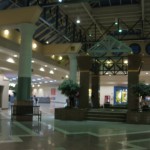
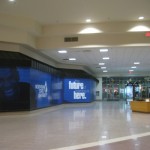
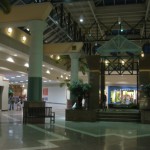
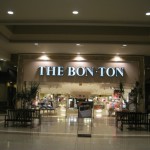
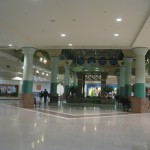
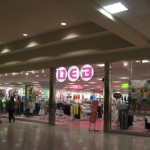
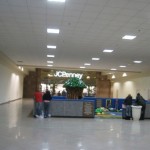
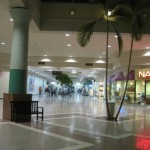
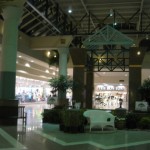
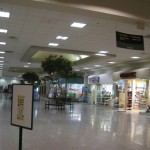
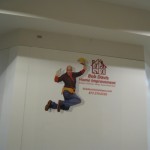
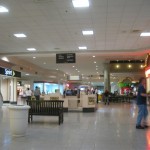
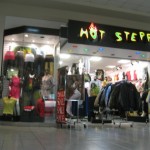
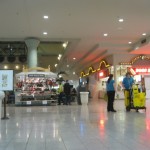
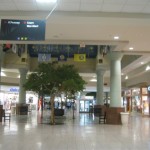
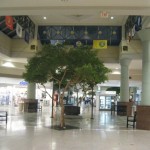
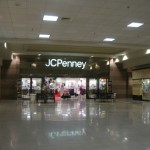
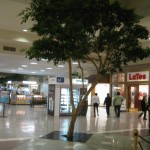
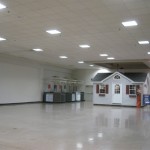
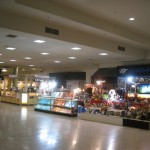
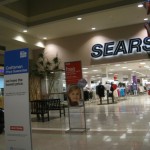
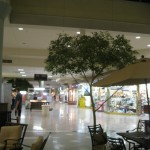
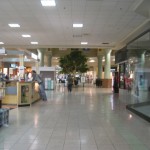
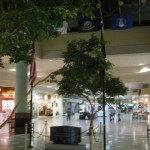
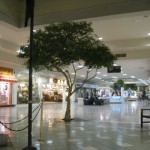
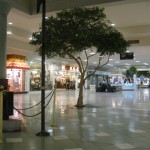
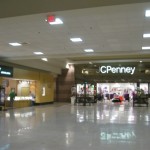
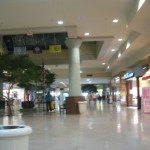
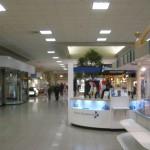
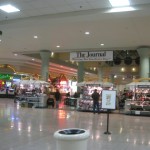
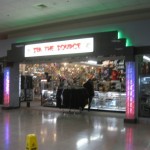
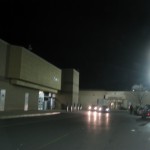
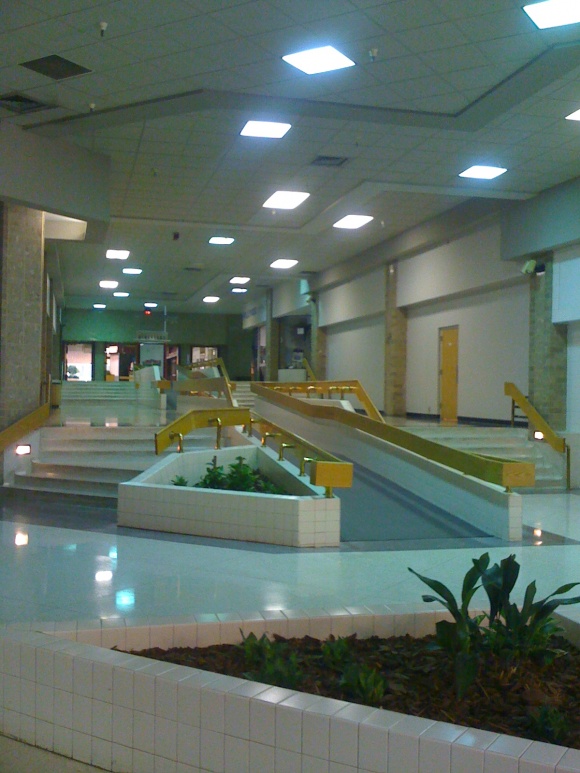 I’m talking about Mountaineer Mall. Located in Morgantown, West Virginia, Mountaineer Mall is the kind of mall dead mall fans dream about, with all sorts of retail antiquities and dated accoutrements. We’re talking about wooden railings with tarnished, aging brass fixtures, brick facades, tile- and wood panel-laden planter fixtures, intact dead store facades from 20+ years ago, and more. Mountaineer Mall was once the dominant – and only – mall in the Morgantown region. Located 70 miles south of Pittsburgh, Morgantown is home to West Virginia University and has the healthiest economy in the state. It has a population of around 30,000 residents, which nearly doubles when the University is in session, and a metropolitan area of 115,000 to boot. Morgantown has a quirky, progressive college town feel, and with its low unemployment and unique culture feels mightily juxtaposed to the rest of the state, or anywhere for that matter. One example of this is the fact that the small city has its own rail-based mass transit, a people mover called the Morgantown Personal Rapid Transit system, which connects downtown Morgantown to the WVU satellite campus located a few miles away.
I’m talking about Mountaineer Mall. Located in Morgantown, West Virginia, Mountaineer Mall is the kind of mall dead mall fans dream about, with all sorts of retail antiquities and dated accoutrements. We’re talking about wooden railings with tarnished, aging brass fixtures, brick facades, tile- and wood panel-laden planter fixtures, intact dead store facades from 20+ years ago, and more. Mountaineer Mall was once the dominant – and only – mall in the Morgantown region. Located 70 miles south of Pittsburgh, Morgantown is home to West Virginia University and has the healthiest economy in the state. It has a population of around 30,000 residents, which nearly doubles when the University is in session, and a metropolitan area of 115,000 to boot. Morgantown has a quirky, progressive college town feel, and with its low unemployment and unique culture feels mightily juxtaposed to the rest of the state, or anywhere for that matter. One example of this is the fact that the small city has its own rail-based mass transit, a people mover called the Morgantown Personal Rapid Transit system, which connects downtown Morgantown to the WVU satellite campus located a few miles away.
